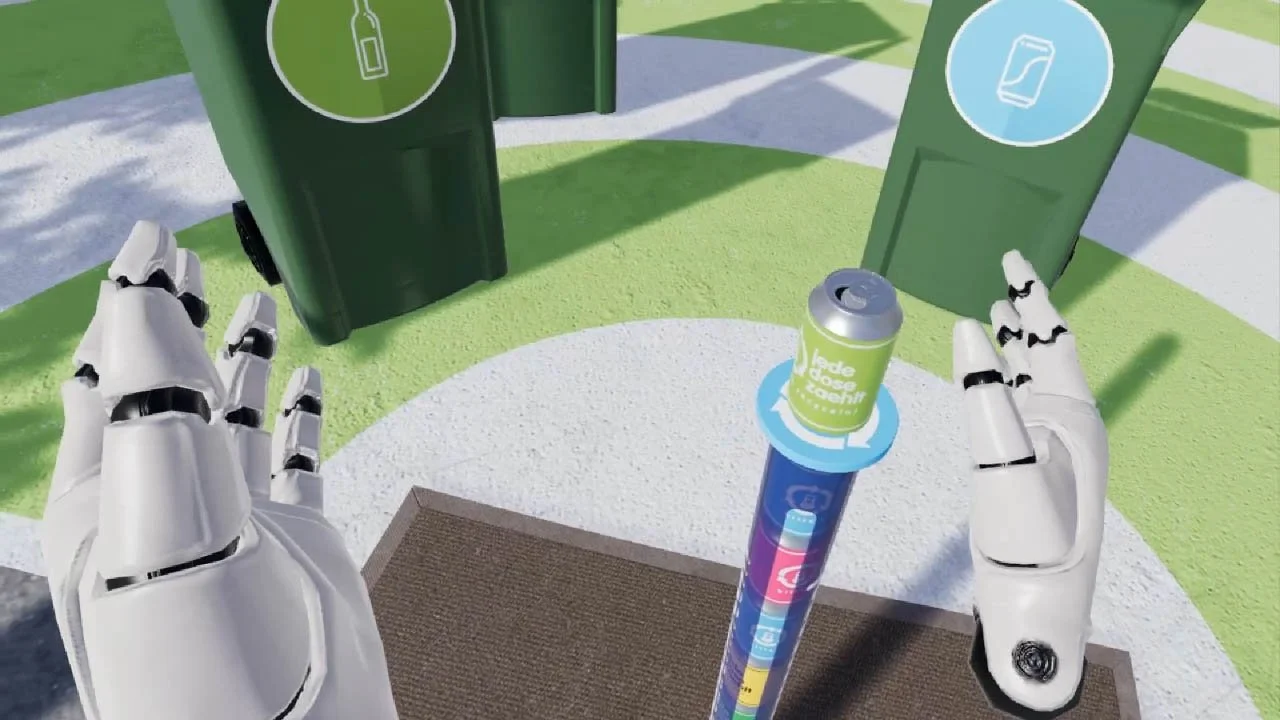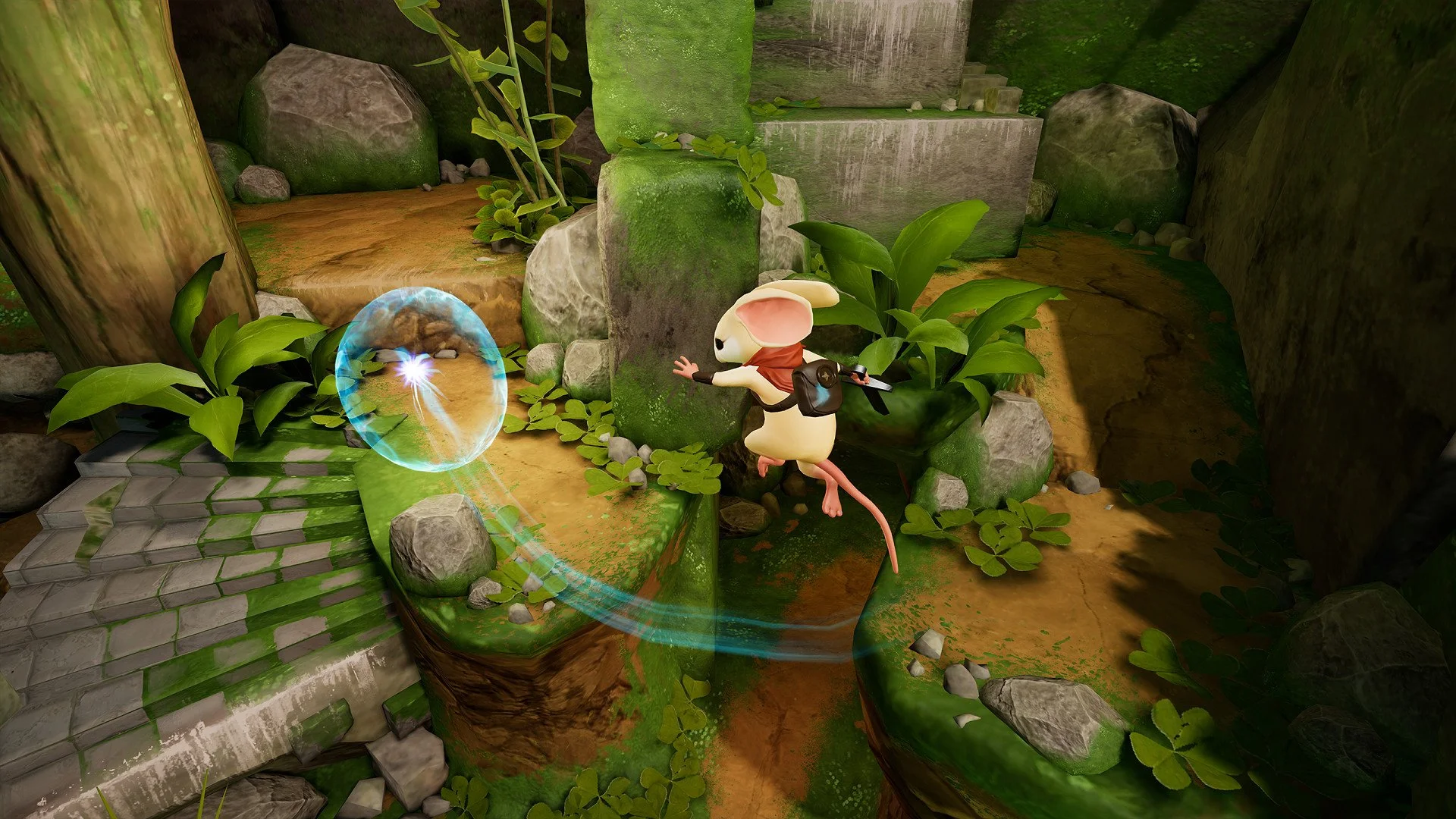Unlocking New Possibilities: How VR Empowers Individuals with IDD
In recent years, immersive Virtual Reality (VR) has emerged as a transformative tool for teaching life skills, improving sensory processing, and bolstering mental health—especially among individuals with intellectual and developmental disabilities (IDD). Rather than relying solely on traditional, linear methods of instruction, VR offers a richly interactive, multisensory environment where users can practice real-world tasks, receive instant feedback, and build confidence in a safe, controlled setting. As the technology becomes more affordable and accessible, there has never been a better time to explore how VR can help IDD learners thrive.
The Science Behind VR for IDD
Before diving into VR game recommendations and practical tips, it’s crucial to understand the evidence demonstrating VR’s impact on life skills and well-being for those with IDD. Three landmark studies spotlight the promise of immersive VR:
Immersive Life-Skills Training (Michalski et al., 2023)
In a controlled intervention using Oculus Quest headsets, researchers recruited 32 adults aged 18–60 with varying degrees of intellectual disabilities. Participants engaged in up to ten VR sessions of a waste-sorting task—learning to sort eighteen everyday items (cans, bottles, and food scraps) into the correct bins (general waste, recycling, organics). The results were astounding:59.4% of participants (19 out of 32) achieved a 90% accuracy rate (sorting ≥16/18 items) within ten sessions, with a median of 8.5 sessions to mastery.
Real-world sorting accuracy improved significantly from pre- to post-training (p < .001), and those gains held steady at a delayed follow-up (≥1 week later), indicating strong skill retention.
Higher adaptive functioning scores correlated with larger real-world gains, suggesting that individuals with moderate adaptive skills may reap the most benefit from VR curricula.
Sensory Processing and Mental Health Gains (Evenness et al., 2022)
Beyond task-specific training, VR “sensory rooms” have been designed to simulate calming multisensory environments—combining soothing visuals, ambient sounds, and interactive elements. In this study of adults with developmental disabilities (including IDD), participants completed multiple VR sessions featuring immersive relaxation scenarios. Key outcomes included:Significant reductions in anxiety and depression scores (p < .01) after repeated exposure to VR sensory modules.
Marked improvements in standardized sensory‐processing assessments, indicating better integration of tactile, visual, and auditory stimuli.
Anecdotally, participants reported feeling more grounded and less overwhelmed by sensory overload in daily life.
Motivation + Engagement Booster (Standen & Brown, 2005)
Although predating high-end headsets, this foundational review of non-immersive VR interventions (desktop-based simulations) underscored that VR-related tasks significantly increased motivation and sustained engagement compared to traditional worksheets or drills. Across multiple life-skill and vocational scenarios, young people with IDD demonstrated:Up to 40% higher task engagement (time-on-task) when learning in a virtual environment versus a paper-based equivalent.
Consistent skill acquisition rates that outpaced control groups by 20–30%, especially in tasks requiring repetitive practice.
Taken together, these studies illustrate that VR is far more than a novelty for entertainment—it can be a robust, evidence-based platform for skills acquisition, sensory regulation, and mental-health support.
Real-World Skill-Building: What Makes VR Effective?
Safe, Controlled Environments
VR allows learners to practice tasks—whether crossing a street, cooking a simple meal, or navigating public transit—without real-world risks. Instant feedback loops reinforce correct actions, while mistakes in VR don’t carry the same consequences they would in reality.Multisensory Engagement
By stimulating visual, auditory, and sometimes haptic senses, VR strengthens neural pathways associated with attention, memory, and motor planning. Studies show that immersive experiences can yield up to 60% better retention compared to 2D video tutorials alone (Michalski et al., 2023) .Personalized Pacing
Individuals with IDD often differ widely in processing speed and fine-motor control. VR applications can automatically adjust difficulty—slowing down tasks, simplifying instructions, or offering extra hints—so that each learner proceeds at their own optimal pace.Engagement + Motivation
Traditional drills can feel tedious. By contrast, VR gamifies the learning process: achieving badges, unlocking levels, and witnessing procedural success in vivid 3D worlds helps sustain motivation. In Standen & Brown’s review, participants’ on-task time rose by nearly 40% when compared to standard methods .
Spotlight on “Waste-Sorting” VR: A Case Study in Lifelong Independence
Imagine Sarah, a 24-year-old with moderate IDD, whose mainstream instruction on recycling never quite clicked. She often struggled to identify which bin to use for plastic bottles versus glass jars, leading to confusion and frustration. When Sarah tried the VR waste-sorting program from Michalski et al. (2023), everything changed:
Immediate Immersion: Guided by on-screen prompts and realistic physics, Sarah picked up virtual cans and heard them clink as she handed them to the correct bin—an experience far richer than flipping through colored flashcards.
Measurable Progress: Session by session, Sarah’s accuracy skyrocketed from 45% correct (pre-test) to over 90% (post-test), all without the social pressure she’d felt in group-based training.
Real-World Transfer: Within a week of finishing her VR sessions, Sarah sorted real materials at home with 100% accuracy, maintaining that proficiency at a follow-up check. Her family reported that she confidently volunteered to do kitchen recycling chores—something she had previously avoided.
Boosted Confidence: Beyond the technical skill, Sarah’s self-esteem soared. She began speaking up more in community meetings and even expressed interest in a part-time custodial position, believing she could handle sorting and disposal tasks independently.
This illustrates how a focused VR module—designed for a specific life skill—can yield tangible, lasting benefits, empowering individuals with IDD to participate more fully in daily routines and community life.
Calming the Mind: VR for Sensory Regulation and Mental Wellness
Sensory overload and heightened anxiety are common challenges for many with IDD. Virtual Reality “sensory rooms” aim to replicate the soothing aspects of multisensory therapy—often found in specialized clinics—within a digital environment. In Evenness et al. (2022), participants entered serene VR landscapes featuring:
Ambient Soundscapes: Gentle rain, soft chimes, or ocean waves synchronized with slow motion visuals.
Interactive Calm Cues: Floating orbs that responded to gentle reaches, creating a feedback loop of sight and motion.
Adjustable Stimuli: Caregivers could dial down brightness or slow particle animations for those easily overwhelmed.
After multiple VR sessions, participants exhibited statistically significant reductions in anxiety and depression scores (p < .01) compared to baseline assessments . Anecdotal feedback often centered on feelings of “grounded calm” and a newfound sense of self-regulation in otherwise stressful situations—whether during crowded community outings or noisy social gatherings.
Top 3 VR Games to Begin With
If you’re curious about introducing VR to an IDD learner, here are three accessible, engaging titles that balance simplicity, safety, and skill-building:
Beat Saber
Why It Works: A rhythm-based game where players slice colored “beats” flying toward them, Beat Saber requires timing, hand-eye coordination, and gross-motor movements—skills that translate to real-world physical activity and coordination. The visual design is intuitive (beats approach on clear lanes), making it ideal for first-time VR users.
Accessibility Tips:
Start with “Easy” mode and reduce song speed if needed.
Use larger practice spaces to avoid collision risks.
Play seated versions if standing balance is a concern.
Job Simulator: The 2050 Archives
Why It Works: Designed with humor and simplicity, Job Simulator lets users experience everyday tasks—making coffee, archiving files, even cooking—through exaggerated, intuitive interactions. It reinforces sequential thinking (ex: “grab the mug, pour, stir”), offers instant feedback, and celebrates experimentation (“you put a shoe in the toaster? Well done!”). Success is measured by completing simple checklists, making it easy to gauge progress.
Accessibility Tips:
Begin with the “Office Worker” scenario, which involves fewer steps than “Gourmet Chef.”
Use VR controllers’ grasp stabilization settings to accommodate fine-motor challenges.
Provide verbal prompts from the caregiver for each step until the learner gains confidence.
Moss
Why It Works: Though it’s a third-person adventure rather than a first-person simulator, Moss offers a unique blend of story-driven gameplay and immersive puzzle-solving. Players guide a small mouse named Quill through beautifully rendered environments by pointing, teleporting, and manipulating objects. While not exclusively tailored to IDD, its accessible controls and narrative focus on empathy and problem-solving stimulate cognitive pathways associated with spatial reasoning, storytelling, and attention.
Accessibility Tips:
Emphasize cooperative storytelling—allow the learner to narrate what Quill is doing, reinforcing language skills.
Pause frequently to discuss the next objective and celebrate small wins (ex: solving a puzzle or finding a hidden path).
Use motion-smoothing settings to reduce motion sickness risk.
Our coaches recommend starting with these titles. Caregivers can introduce VR gradually, observe how each individual responds, and tailor future experiences based on observed strengths and challenges.
Practical Steps for Getting Started
Choose the Right Headset
Budget-Friendly Options: Oculus Quest 2 (now often marketed as Meta Quest 2) strikes a balance between performance and price. It’s wireless, easy to set up, and has a robust library of games.
Accessibility Features: Look for built-in passthrough cameras (for boundary awareness) and adjustable interpupillary distance (IPD) sliders to customize comfort.
Design a Safe Play Area
Clear a 6×6-foot space free of obstacles (furniture, cords, or pets).
Lay down a textured mat to provide tactile feedback when the user approaches the play-area edge.
If possible, use companion apps that define “Guardian” boundaries, triggering on-screen warnings if the player steps too close to the edge.
Start with Guided Sessions
Session Length: Begin with 5–10 minute sessions to minimize fatigue or disorientation. Gradually increase duration as comfort grows.
Verbal Coaching: Provide clear, encouraging instructions. For example, in Job Simulator: “First, locate the green lever—that’s how you grab objects.” Use positive reinforcement whenever a task is completed.
Breaks + Debrief: After each session, ask simple questions: “What did you like best?” “Was anything hard?” This reflection reinforces learning and identifies areas needing extra support.
Monitor Emotional + Physical Responses
Watch for signs of cybersickness—clammy skin, complaints of dizziness, or nausea. If these appear, pause the session immediately.
Notice emotional cues: frustration may indicate that a task is too challenging; excessive passivity might suggest boredom. Tweak game difficulty or switch to a different title accordingly.
Integrate VR with Real-World Practice
After mastering waste-sorting in VR, encourage the learner to apply that skill at home—perhaps by sorting recyclables during a family chore.
If using Beat Saber, follow up with simple tabletop rhythm exercises (clapping patterns) to extend coordination benefits beyond VR.
Common Concerns
“Is VR Safe for My Loved One?”
When introduced responsibly (short sessions, proper supervision, tactile boundaries), VR is extremely safe. Devices like the Meta Quest 2 include built-in guardian systems and recommended usage guidelines. Always ensure the learner feels in control—allow them to remove the headset at any time.“Will They Get Dizzy or Anxious?”
Some individuals, especially those with sensory sensitivities, may experience mild disorientation. To minimize this:Start with seated experiences (Moss).
Enable “Snap Turn” or “Motion Smoothing” settings to reduce motion sickness.
Keep initial sessions under ten minutes and gradually build tolerance.
“How Do I Know Which Games Are Appropriate?”
Begin with titles that have simple mechanics, low visual clutter, and adjustable difficulty levels. Observe reactions closely—if a game feels overwhelming, switch to a more straightforward experience.
A Brighter, More Inclusive Future
Virtual Reality is not just a passing trend—it’s a game-changing platform where individuals with IDD can practice vital life skills, experience calming sensory spaces, and build self-esteem through playful, engaging interactions. The data speaks for itself:
59.4% mastery of a waste-sorting skill within ten short sessions, with lasting real-world gains (Michalski et al., 2023) .
Significant reductions in anxiety + depression (p < .01) after VR sensory-room exposure (Evenness et al., 2022) .
Up to 40% higher engagement and a 20–30% edge in skill acquisition compared to traditional methods (Standen & Brown, 2005) .
Imagine a future where every individual—regardless of cognitive ability—can step into a virtual classroom tailored to their needs, learn at their own pace, and emerge with newfound independence. That future is already here. VR headsets are more accessible than ever, and the library of supportive experiences is growing exponentially.
References
Michalski, S. C., Gallomarino, N. C., Szpak, A., May, K. W., Lee, G., Ellison, C., … Loetscher, T. (2023). Improving real-world skills in people with intellectual disabilities: an immersive virtual reality intervention. Virtual Reality, 27, 3521–3532.
Evenness, A. B., Smith, P. T., Nguyen, J., Johnson, L. (2022). Evaluating a virtual reality sensory room for adults with disabilities. Scientific Reports, 12, 1–12.
Standen, P. J., Brown, D. J. (2005). Virtual reality in the rehabilitation of people with intellectual disabilities: Review. CyberPsychology & Behavior, 8(3), 272–282.






